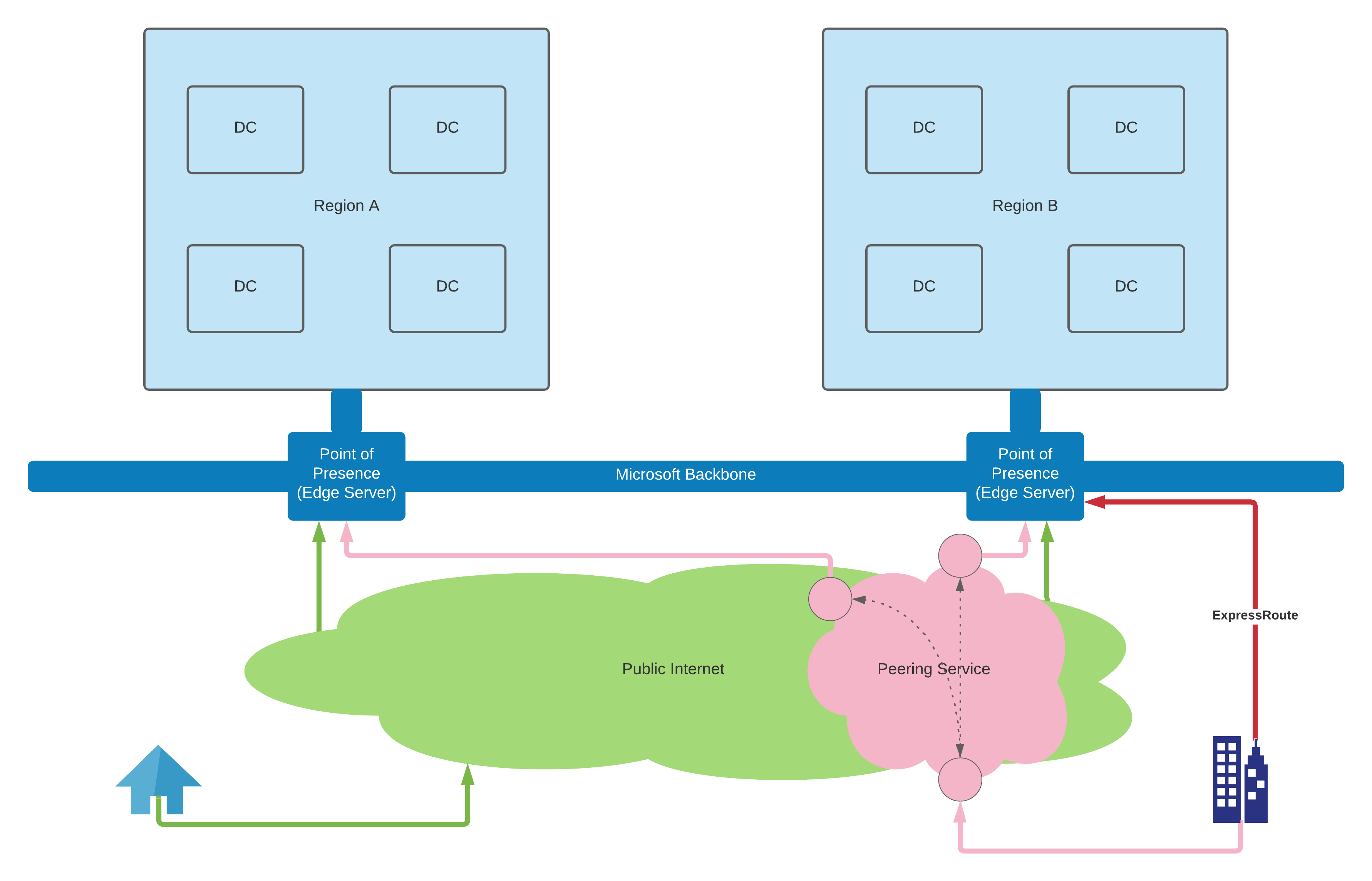The Microsoft global network

The Microsoft global network backbone network connecting Microsofts various datacentres around the world to underprin the cloud services of Microsoft.
Here I will describe some key components to understanding the network makeup and describe a couple of routing techniques employed in the network: cold potato and hot potato routing.
Data centre (DC)
A set of networked compute resources that store and process data.
Region
A geo-located set of datacenters. The location may be important to consumers for political reasons, legislative reasons, speed or redundancy.
Microsoft backbone
A network backbone connects multiple networks together much like a bus.
Point of presence (POP) (edge server)
POP is an exchange point between multiple networks to allow data exchange between two networks.
It can be a simple server installed in a competitors cabinet or more elaborate deployment of machines and networks.
Internet
ISP offers access to the public network. A global network of millions of interconnected machines sharing data and data flows.
An NSP provides a backbone to services, other ISP networks and the internet.
Nowadays, the difference between the two is blurry. It could be viewed that ISPs are a subset of NSPs.
Peering service
Peering is a relationship between Internet service providers (ISP) in which they share a direct network instead of routing traffic through the Internet.
Peering is either done directly between the ISPs or through a centralized peering exchange.
Peering allows for very fast traffic at low cost because the ISPs connect directly to each other, which means that network service providers (NSPs) do not need to be paid for providing access to the Internet backbone.
This technique is commonly used by small and medium-sized ISPs across the globe.
Expressroute
This is a direct connection - via a Microsoft partner - to the Microsoft edge servers for connectivity to the Microsoft global network.
This provides direct access to the Microsoft network bypassing the public internet.

Routing models
Cold potato routing
This is where the data packets stay on the originating system network for as long as possible and hand off as close to the destination as possible.
Considerations:
- more expensive
- optimal routing
Hot potato routing
This is where the data packets are handled as a hot potato and handed off to another network for routing to the destination as soon as possible.
Considerations:
- cheaper
- potentially longer as exposed to more public pathways
In the context of the Microsoft global network cold potato routing is routing via the Microsoft global network and hot potato routing is routing over public internet.
Cold potato routing is the default routing method on the Microsoft global network.
